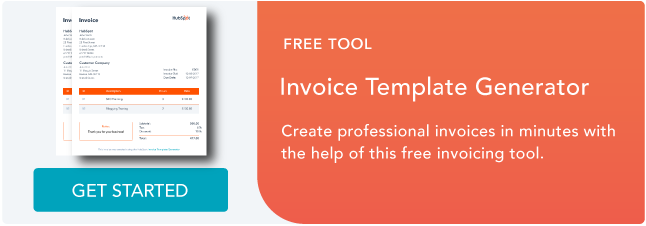Invoicing. Seems pretty straightforward, right?
You send a customer an invoice. They pay it. You’re rich. Yay.
Unfortunately, that’s not always how the story goes. And in most organizations, disorganized invoicing can be a serious time suck.
Like most things worth doing, creating an invoicing process isn’t the easiest task to accomplish. It requires some strategic thought, a handful of decisions that could impact your business long-term, and a bit of alignment. To help you get started, we’ve outlined the basics for setting up an organized invoicing process for your business below.
To help you get started, we’ve outlined the basics for setting up an organized invoicing process for your business below.
Invoicing Payment Terms
As an SMB, you’ve got you own set of expenses to cover, which means it’s super important that you have a clear plan for bringing money back in to your business.
To do this effectively, you need to start by looking inward and defining the payment terms that make the most sense for your business.
To create clear payment terms, you need to figure out:
1) When you want to get paid.
Depending on the product or service you offer, as well as your own unique business needs, you can choose to invoice weekly, monthly, quarterly, or set a custom schedule.
The key word here is schedule: You want to pick a payment plan and stick to it to avoid confusion, set clear expectations, and streamline cash flow.
2) How you want to get paid.
Payment methods refer to the channels through which your customers can pay for your products or services.
Your approved payment methods play an important role in facilitating hassle-free invoicing and should aim to reflect your unique business needs and privacy commitments.
These methods should also reflect your customer’s payment preferences. By meeting your customers where they are, you make it easier for them to complete payments on time, every time.
Different payment methods might include: Credit/debit card payments, cash, check, money order, and so on.
3) Debt collection policies.
Even when you have an organized process for invoicing, having to deal with non-paying customers is still a reality to plan for.
When defining your payment terms, consider including the actionable steps you will take if you are unable to resolve an unpaid invoice.
For example, you may state that you will contact the customer three times before involving a lawyer or business advisor to pursue further action. This will helps to make it clear that payment is mandatory and you have a plan for follow up.
Invoice Creation
Once you know your non-negotiables, you’re ready to create an invoice.
Depending on whether or provide a service or a product, the following guidelines serve as best practices when creating a professional invoice:
- Include the word “Invoice.”
- Assign a unique invoice number and date.
- Provide your business name and contact information.
- List out the details of the product(s) or service(s) you provided — include quantity, rates, hours, etc.
- Provide the name and contact information of the customer.
- Highlight the subtotal.
- Specify any payment details or a due date if necessary.
Sounds like a lot to remember? There are a number of free invoicing tools that you can lean on to ensure you’re not leaving any important information off of your invoices.
For example, our free Invoice Template Generator aims to simplify the process by allowing you to easily create and download professional invoices to send to your customers.
Simply fill in your business details in the invoice template to populate the statement, customize the color and logo to fit your brand, and download it as a PDF to be sent off to your customers.
Invoice QA
“Proof your invoice for typos, currency errors and computational mistakes. In many cases, invoices are sent to collections because the client won’t pay due to an invoicing error,” explains finance and accounting professional, Simon Speirs.
To avoid sending off an invoice to customer containing any silly mistakes, take the time to review each invoice to ensure:
- You’re sending it to the right contact. Invoices contain sensitive financial information. Make sure you’re routing it to the right place to avoid any legal issues.
- You’ve got your numbers straight. Double-check itemized lines for proper quantities, hours, and prices. Revisit totals and subtotals, paying close attention to the accuracy of tax and discounts.
- You’ve specified any additional payment details. There should be no surprise fees included on your final invoice. If you’ve added anything that hasn’t already been discussed with the customer, be sure to specify why it’s included.
- You’re using the right currency. If you’re billing international customers, be sure that all of the currency conversions add up.
- You’ve included your contact information. In the even that customer does have questions about the invoice, include your contact information and logo to point them in the right direction to get assistance.
Delivering & Monitoring Invoices
There are a few different ways you can actually send off your invoice to your customer. Two of the most common options?
- Send the invoice electronically via email or website.
- Send the invoice via postal mail.
Sending an invoice electronically means that you have the option to send it through email or directly from your accounting or invoicing software.
This is typically a preferred delivery method, as it allows you to send invoices quickly, as projects or orders are completed.
If you choose to send an invoice by postal mail, you’ll want to pay close attention to timing, as it may take a few days for your invoice to arrive, be processed, and then be sent back.
What happens if I don’t get paid?
Remember those payment terms you set up at the start of all of this? It’s time to review ‘em. This will help you determine whether or not the customer has violated the terms entirely, or if they are just cutting it close.
Before you do anything, reach out to the customer to provide a friendly payment reminder – this is a best practice. You can do this via email, phone, or mail – just be sure that you’re both prompt and clear in your outreach. You may find it’s best to send several follow up attempts.
If you fail to secure payment or renegotiate payment terms after following up with a customer, you’ll want to consult a trusted business advisor or lawyer to discuss next steps for pursuing the outstanding invoice.
Ready to Start Getting Paid?
Effective invoicing doesn’t happen overnight — so be patient. The important thing is that you recognize the importance of implementing an organized, agreed-upon process for keeping up with the outgoing and incoming, and you commit to making regular improvements to it.
Disclaimer: This blog post includes some information on legal issues surrounding invoicing, but legal information is not the same as legal advice — applying the law to a specific circumstance. We’ve conducted research to better ensure that our information is accurate and useful, but we insist that you talk to a lawyer if you want professional assurance that our information, and your interpretation of it, is accurate. In a nutshell, you may not rely on this information as legal advice, nor as a recommendation or endorsement of any particular legal understanding, and you should instead see this info as for entertainment purposes only.
![]()
December 1, 2017 1:00 pm
Source: https://blog.hubspot.com/marketing/rss.xml?tabid=6307&moduleid=8441&maxcount=250
Link: https://blog.hubspot.com/marketing/how-to-create-invoicing-process






